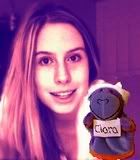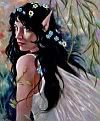Tennafox wrote:Hey Gidget, Sorry to burst your bubble. The type of gobulin that Epogen makes more of is hemogolulin found in red blood cells. The gobulin that you showed in your picture is called Immunogobulin created and secreted from White blood cells. They are better known as antibodies. There are multiple types IgG (gamma), IgM, IgE.. etc. The age chart you found is presumable for a breast fed infant which is getting the maternal antibodies (Immunogobulin) from Mom's milk or from the placenta before birth. That immunity starts to wane off when the kids gets to be about 6 months old. Then they get colds and start making their own antibodies....
Wendi
sack36 wrote:Gidget wrote:I did some research on blood traits with little luck. The only thing I found was something called "thalassemia trait" which can be treated with epogen, but it sounds like a bad thing and didn't seem to fit the story. *shrug*
Recently I saw a TED talks that is researching the possibility that cancer (a really bad thing) might be able to be used to regrow damaged organs (a pretty darn good thing). So I figure that thalassemia (akin to cycle cell anemia) may have some traits that are good also. I went digging.
Here's what I found so far: Epogen increases the globin in a person's blood, right? But there is more than one kind of globin. ( hope I'm not loosing people on this. If you have problems following, let me know and I'll try to explain better) Not only are there different kinds, but the amounts of each changes dependent on
age!

At birth, ¥ globin swaps with ß globin, but alpha globin (sorry this font doesn't carry the full range of greek letters) has no counterpart. What would happen if a genetic marker showed up that created an opposite of the a globin? Say ∞ globin? That's where I'm going next.
ETA: On the way there, I took a left turn and came up with something else interesting.
In the above image you can see one other globin molecule, and it bears an uncanny resemblance to our little 8 symbol. It's the delta globin. researching that now.
Before I go, though, I'd like to point out that Thelassemia shows up in just about every racial/cultural group except northern European. Since Bree is obviously from Northern European (non Mediterranean) stock, this may have a significance.
Found this quote: "Our goal is to design a modified EKLF [?] that binds to the defective delta-globin promoter and enhances delta-globin gene expression. [1996]"
gettin there.
Wendy, I don't think you got even one part of this right. The chart is mine, not Gidget's. The chart is about
globin, not
gobulin. The globins come from the red blood cells, not the white. The age chart clearly shows pre and post gestation, not birth to 6 months. And finally, since we're talking about globins, we are not referring to the antibodies that make up white (Immunogobulin) blood cells.
thalassemia does have different types. It basically causes the hemoglobulin to not hold oxygen correctly. Since it is genetic, giving epogen would just create more red blood cells which also couldn't carry oxygen correctly. Patients with this are quite ill (most of the time) and require blood transfusions to have "good" hemoglobulin...
also the squigly line that you guys were talking about is called delta. It;s just another type of antibody.
Again, you're having a hard time with the differences between
globin and
gobulin. The different types of
globin are:
- Alpha & Beta - the most common of the globin mutation bundles with more than 200 different forms of mutation
Delta & Gamma - much less common. About 26 different paths to mutation.
Zeta & Epsilon - the least common of the mutation bundles. In fact, no data was found for these.
Because the work I posted was talking mostly about genetic defects and the possibility of using a gene therapy to correct genetic abnormalities, the Epogen has nothing to do with the chart. It has to do with the need for lots of Bree's blood.
Thalassema has two basic types: Alpha - the more damaging of the two. It shows primarily in Blacks, SE Asians, and Middle Easterners. Beta - much more common. Shows in Indian and Black families.
Now if you don't understand any of this, before objecting and trying to correct me, ask for clarification. I can do that.





